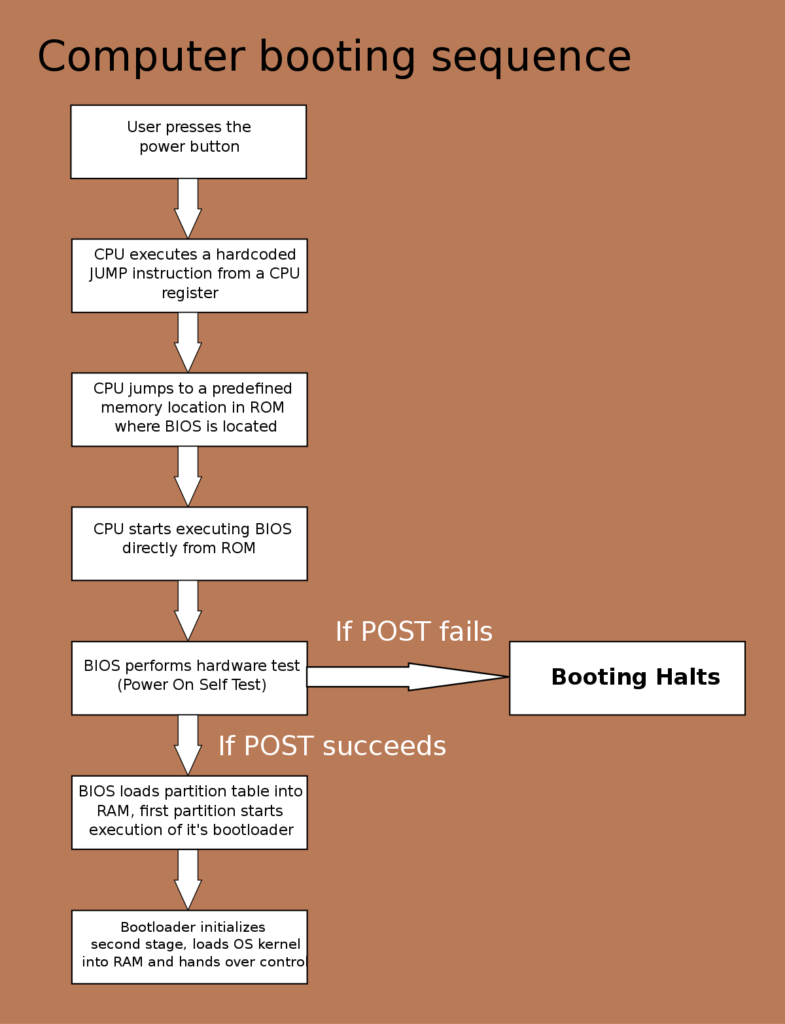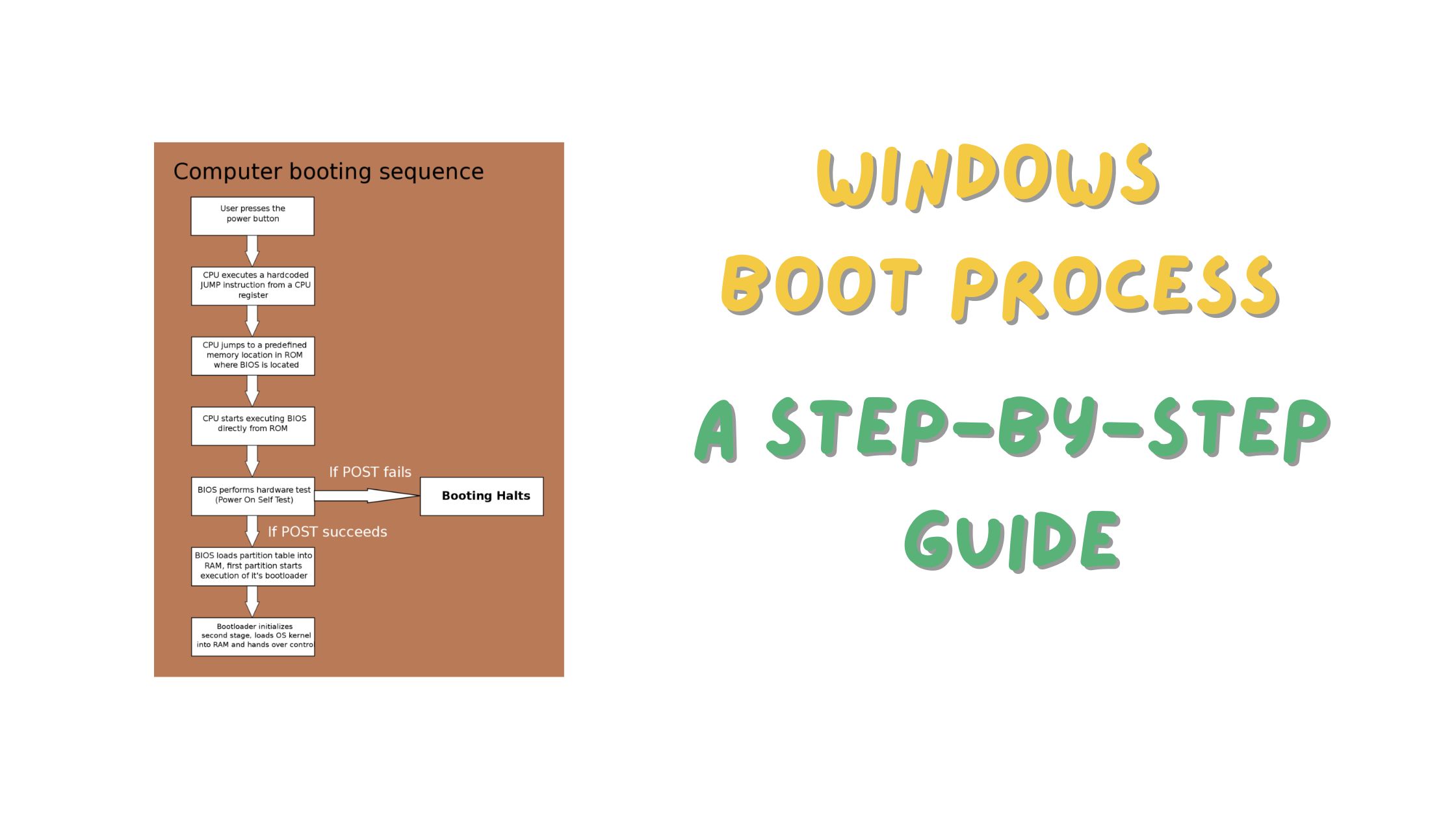When you turn on your Windows computer, a complex process called the boot process takes place. This process loads the operating system into memory and prepares it for use.
The boot process can be divided into the following steps:
- POST (Power-On Self-Test): The POST is a series of tests that the BIOS performs to check the hardware components of your computer.
- BIOS (Basic Input/Output System): The BIOS is a firmware program that is stored on a chip on your motherboard. It provides the basic functionality needed to start your computer and load the operating system.
- Boot Loader: The boot loader is a small program that loads the operating system into memory.
- Operating System: The operating system is the software that controls your computer and allows you to use programs and files.

Steps in the Windows Boot Process
- POST: When you turn on your computer, the BIOS performs the POST. The POST checks the hardware components of your computer, such as the CPU, memory, and hard drive. If the POST finds any problems, it will not be able to start the computer.
- BIOS: Once the POST is complete, the BIOS loads the bootloader. The bootloader is a small program that is stored on the hard drive.
- Boot Loader: The boot loader searches for the operating system and loads it into memory.
- Operating System: Once the operating system is loaded into memory, it takes control of the computer. The operating system then starts the necessary services and loads the user interface.
Troubleshooting the Windows Boot Process
If you are having problems with your computer booting, there are a few things you can do to troubleshoot the problem:
- Check the POST: If your computer is not booting, there may be a problem with one of the hardware components. You can try running a diagnostic tool to check for problems.
- Repair the boot loader: If the boot loader is damaged, it will not be able to load the operating system. You can use a Windows repair disk or installation media to repair the bootloader.
- Reinstall the operating system: If you have tried all of the above steps and you are still having problems, you may need to reinstall the operating system.
The Windows boot process is a complex process that involves several different steps. By understanding the steps involved in the boot process, you can troubleshoot problems and keep your computer running smoothly.
